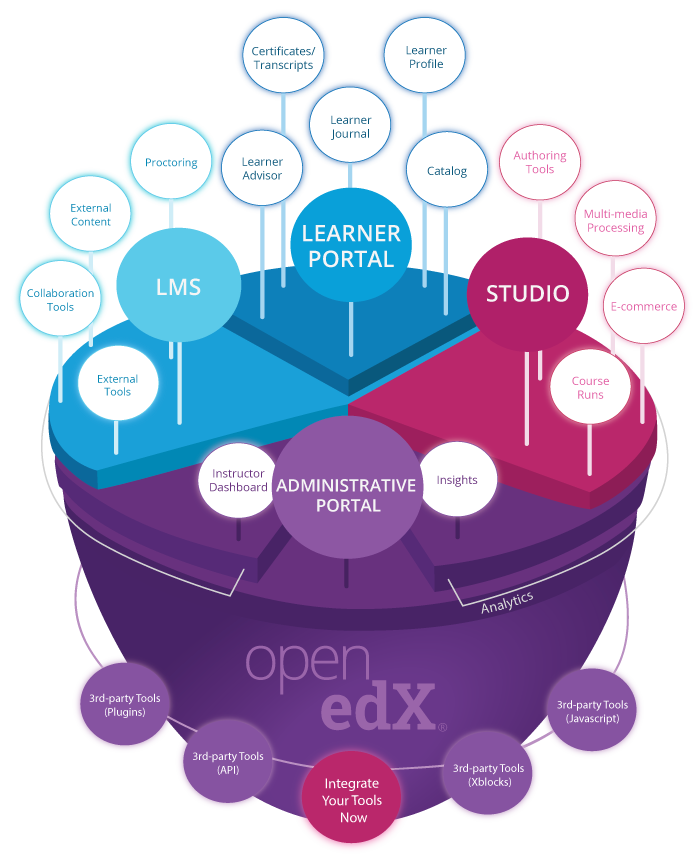Open edX: The future of Online Learning
Technology, as we’ve noticed, has expanded and reached newer horizons and is in par with the increasing needs of every sector that affects human lives. Today’s growing usage of technology has founded a multitude of ideas that has been able to provide a single facility in the most efficient of ways. Taking the example of the education sector, that has grown to include a sea of options with regard to the process of learning, has helped students engage, learn and enjoy information that is presented before them. With the inclusion of popular technology into the classroom space, such as A.I., Machine Learning, Computational Thinking, Augmented and Virtual Reality, there has been remarkable improvement in the field of education. One of the main improvements experienced in the education sector is the creation of an open source platform that offers the worlds best educational tools that cater to students all over the world. An idea that spawned from two prestigious universities, namely MIT and Harvard, the Open edX project started back in 2012 as a joint educational initiative. Marco Morale’s input aided us in better understanding the story of edX platform’s evolution.
“The core idea of Open edX is providing open sourced easily scalable access to top-notch education tools. We are finding out how huge scale impacts learning. We are pushing the boundaries of possible and finding new ways of education.”
Let’s dive into what Open edX is, before we go further into its core.
What is Open edX?
It’s as the name suggests: an open source educational instruction platform that fulfills the needs of various organizations, as they create engaging experiences that cover a variety of topics, target set goals, and use different learning scenarios. As an open source platform that is to offer all of these services under one roof, it is flexible and diverse. It helps in integrating multiple third party systems, like SCORM, LTI and iFrame, so that these literally have no boundaries. Organizations that vary in sizes and objectives use this tool and prefer using it over other LMS software’s available in the market. All may not seem clear from the above, as the next question begs why.

Why Choose Open Source Platforms such as Open edX?
Open Source Platforms aren’t different from Learning Management Systems. In fact, they come under a branch of LMS, with their counterpart being Propriety LMSs. Propriety LMS are licensed under exclusive rights, restricted from any modification, distribution and reverse engineering. And these don’t walk around with a “free” tag. Open Source Software’s, on the other hand, give you the freedom of choice to modify, distribute and reverse engineer your way through to your course. They’re different in many ways, which are all covered right here for you.
This might come as a shocker, but we’re here to break a huge number to you: around 19 million people all over the world use Open edX to propagate and utilise material online. And the there isn’t any catch. The logic behind this is pretty simple: when a system is offers you more than what you need, along with its readiness for the future of online learning, it becomes popular.
Challenges faced with Online Teaching tools
As mentioned above, there are organizations that looking to replace LMS, as they aren’t fully equipped to hold the future of online learning. Other advantages of Open edX include:
-
Advanced features, such as content creation, course organization, and administration.
-
Comfortable Web and mobile interface.
-
Variety of content types and delivery features.
-
Integration with internal systems and corporate databases.
-
Reporting and analytics features Modern learner engagement features, such as gamification, adaptive learning, etc.
-
Custom look and feel aligned with brand
Let’s go over a few such features that leave out distractions that hinder the users:
-
Course Navigation. A structured course navigation bar helps the user switch between modules and lessons. It also is easy to understand which course modules and lessons are complete, in progress or incomplete.
-
Progress Dashboard. Open edX allows learner’s to monitor their progress dashboard in different ways. The dashboard gives vital information and an understanding of the current course success and important information about assessment results in a structured report format.

-
Type of content. Open edX provides the ability to create out of the box courses that allow text, images, videos, interactive videos and images, SCORM, iFrame, LTI and 20+ assessments. It can be extended to simulation, virtual lab, etc, according to the need of the project.
-
Polls and surveys. Its good survey tool can help instructors get answers on important questions that their learners ask.
-
Social Abilities. Open edX’s social abilities allow students to collaborate on assignments, projects, discussions with other learner’s about the educative material, or take part in polls and surveys.
-
Reporting and Analytics. Using the analytics tool in Open edX, instructors can keep track of the enrollments and unenrollments within a chosen period.
The difference in the reports specify which modules and assessments case problems to students, and detects which courses might need improvement. To know whether Open edX suits you, dive deeper into its features and abilities before booking personal demos through various websites.
Related links:
